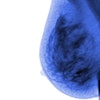The linear, non-threshold concept remains the best basis for predicting the damaging effects of radiation on living creatures, according to a report by the Bethesda, MD-based National Council on Radiation Protection and Measurements (NCRP), an independent organization of radiation scientists.
The report was released June 12 by lead researcher Dr. Arthur Upton, former director of the National Cancer Institute and currently professor of environmental and community medicine at the University of Medicine and Dentistry of New Jersey.
Concerns about the long-term effects of radiation exposure in radiologic exams have prompted efforts to create more reliable and understandable methods of measuring and expressing radiation dose in patients.
While the observable effects of radiation exposure can be measured only at high doses, the linear concept proposes that if certain changes can be seen at an exposure of 1,000 units, a tenth as many changes occur at 100 units, and one-hundredth as many changes occur at 1 unit, the NCRP said in a statement accompanying the report's release.
"The significance of non-lethal mutations and chromosome aberrations is that they are implicated in the causation of cancer, a clonal disorder that may result from such changes in only one cell in the relevant organ," the report said. "The types of functional genetic changes implicated thus far in carcinogenesis include the activation of oncogenes, the inactivation or loss of tumor suppressor genes, and alterations of various other growth-regulatory genetic elements (e.g., loss of apoptosis genes and mutation in DNA repair genes)." At the same time, the specific role such changes may play in the cancer process has not yet been fully elucidated.
The report cautions that although its conclusion is based on an evaluation of existing data, it must be taken as a conservative presumption rather than an assertion of direct cause and effect between the extrapolation of low-level, low-energy-transfer (LET) radiation exposure and the onset of a particular form of cancer in any individual.
"Based upon direct experimental observations ... it is concluded that cellular traversal by a single radiation track of any type of ionizing radiation has a nonzero possibility of depositing enough energy in a critical macromolecular target, such as DNA, to injure, but not necessarily kill the cell in question," the authors wrote.
Exposed cells can also "misrepair" themselves, leaving permanent changes including cancer induction. This is more true of exposures to high-LET radiations than in low-LET radiations such as medical x-rays and most natural background radiation, the report said, and the risk level also depends on the type of cancer.
The authors stated that while their conclusions were drawn broadly from observations at high exposure levels, the dose-response curve for the overall frequency of solid cancers in atomic bomb survivors "is not inconsistent with a linear function down to a dose of 50 millisievert."
By AuntMinnie.com staff writers
July 13, 2001
Related Reading
Panama orders autopsies of radiation accident victims, July 5, 2001
ICRP guidelines on x-rays and pregnant women, July 6, 2001
Pregnancy test advised for female trauma victims prior to radiation exposure, June 28, 2001
Genetic modification sensitizes tumor cells to radiation, June 25, 2001
FDA's radiation concerns may lead to dose displays for scanners, May 22, 2001
Copyright © 2001 AuntMinnie.com



















